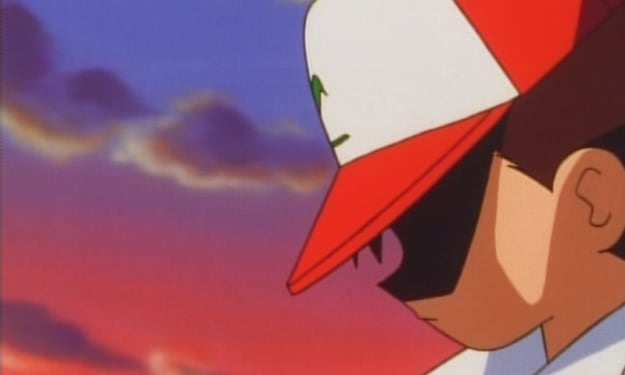How to Be a Better Artist
If You're a Complete Beginner

I like to draw, aspire to be better, because through art, I'm able to create entirely new worlds and characters.
There are a lot of people who are much better artists than I'll ever be, even if I study their work and try to emulate it. For these people, and the painful inferiority complex they've created in me, my solution is usually more liquor. But liquor is expensive, and the family interventions are starting to wear on me.
But there are also people who think they can't draw, and haven't really tried. An idea that doesn't stop circulating is that people are born good artists. I think that idea stops a lot of people from trying to draw in the first place.
It's true that some people are just able to pick up a pencil, from a very young age, and produce a perfect replica of the Mona Lisa, without any paint or way of producing color. It's a bit baffling, and actually defies the laws of reality (most of these people can also move solid objects with their minds, and shoot lasers from their eyes).

"You see that painting? I drew that with a pen from work."
But those people are very rare. For most people, drawing is always a challenge, and takes a lot of deliberate study and effort.
If you want to draw, and are one of the few people who are worse at drawing than I am, I'd like to teach you how to begin drawing, covering the few things you need to improve upon to become a better artist.
Unfortunately, no amount of book knowledge is going to make you a better artist—it's probably 10 percent study and 90 percent application. But if you stick with it, you should see noticeable improvement.
What You Need to Understand (and Continue Learning Forever):
1. How to draw shapes/form: Most of what you need to know to be a better artist involves awareness of what objects look like, how they interact, and how to position them in space.
One of the most tedious exercises artists are often told to repeat is to fill up a blank sheet of paper with shapes, typically squares, triangles, and circles, then cubes, pyramids, and spheres (typically conveyed through shading- a flat sphere is just a circle).
I've managed to fill up a few sheets before I started to hate my miserable existence, and went back to the liquor cabinet. I wouldn't recommend too much rote practice like that. If you're not consistently drawing what you want to draw, you're bound to get burned-out.

The reason we study shapes is that anything you draw can be simplified to basic shapes and lines. Sitting down to draw almost anything can be overwhelming without breaking it down into more simple shapes.
In fact, most of drawing, at a higher level, is setup. If you want everything to work out okay in your art (it usually doesn't), the best thing you can do is go in with a plan.
2. Proportion and Perspective: I was originally going to include these as two separate items, but they're basically related.In either case, it does no good to just break objects down into shape—it's also important to draw them properly in relation to other objects. This is something I struggle with sometimes, because I tend to get lazy when it comes to perspective and proportion.The most accurate way to draw something proportionately is to get out a ruler, but most people don't have a ruler with them everywhere—it's a bit of an inconvenience. Other people draw one thing first, compare it to the size of their pencil or eraser, and then use that measurement in relation to the source to roughly sketch out where everything else is supposed to be.

A rough storyboard, a good illustration of perspective and proportion (hopefully).
Perspective is partly proportion in scale, and partly about angles. Perspective is about understanding where two objects are in relation to each other, and conveying that on a two-dimensional sheet of paper.
Here again, it's a good idea to get out a ruler, or use the head of your pencil, and just crudely draw out where everything's supposed to fall on the paper.
But if you want to avoid your work turning out badly proportioned or not in perspective, the best approach is to make sure those details are roughly sketched out and accurate before you lay down anything final.
3. Lighting: You could spend a lifetime studying lighting. Before I really got into studying how light works, I thought everybody else had some secret formula on how to precisely render it.But a lot of it is guesswork, and repeated trial and error, until your lighting looks passable to the general population.
Maybe when I feel like I have a good handle on lighting, I'll write an article on digital painting or color (although you could probably write an entire series), but I'm nowhere near confident enough to tackle that yet. Fortunately, lighting isn't something you need to understand all that well if you're just illustrating. Nowadays, a lot of companies have a designated illustrator and painter/inker, and the two don't do the other's job. In illustration, you need to understand lighting for the sake of shading, which can give your work depth. The most important things to keep in mind here is where your light source is and what your object's made out of/how its surface works.
4. Contour/Line: Probably my biggest frustration in learning digital art were the shaky, noodle-y lines I produced. Some say that before you can really get to work on a tablet, you need to spend anywhere from one to three months drawing epileptic lines. For me, I still need to get in a groove before I can use my tablet at all decently. Warm-ups are very much still a thing for me.As it turns out, I wasn't drawing correctly in the first place. A lot of us are trained to draw from our wrists, not our shoulders, and to draw over lines a lot rather than making straight, confident lines in the first place.Here is where I again emphasize the importance of the rough sketch. If you want clean lines, make line-art one of your final steps. You draw in the confident, cleaned-up lines after you know where they're going to go. If you're working digitally, just draw your rough artwork on another layer. If you're drawing on paper, make your rough lines very, very light, so that you can draw over and erase them as you need.
About the Creator
Gannon Kendrick
Studying game developer and artist. Writes occasionally.






Comments
There are no comments for this story
Be the first to respond and start the conversation.